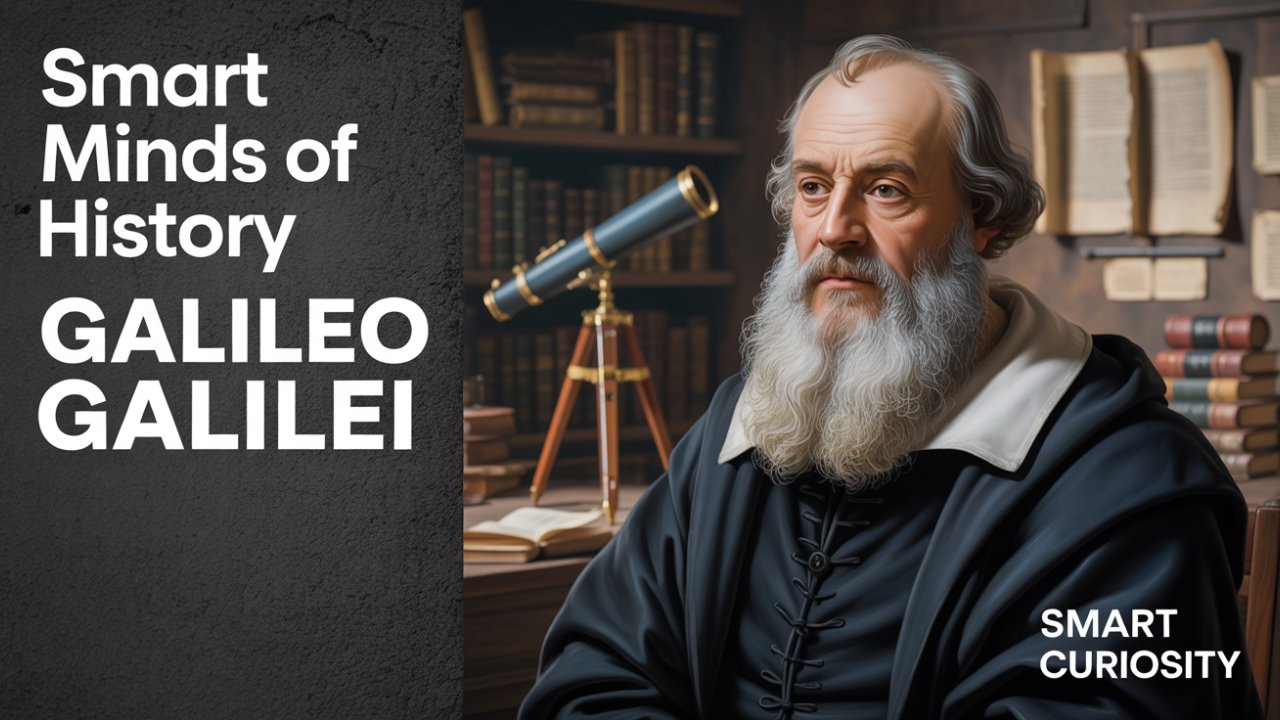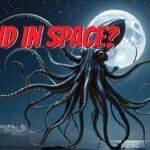He was a man who dared to gaze upon the heavens and believe the testimony of his own eyes. Yet the established order, an institution that had consolidated power for centuries, branded him a heretic. His crime was not one of action, but of intellect: for proposing that the Earth itself was in motion.
Galileo Galilei’s formidable mind and insatiable curiosity refused to be silenced. This is the chronicle of how one man, armed with a revolutionary epistemology, confronted the most powerful institution in the Western world. He is revered as the father of modern science, an Italian astronomer and physicist whose paradigm-shifting ideas utterly reshaped our comprehension of the universe. This is the story of how his life’s work laid the enduring foundation for centuries of scientific discovery.
The Ordinary World of a Restless Mind
To comprehend a revolutionary, one must first appreciate the world that shaped him. Galileo Galilei entered this world on February 15, 1564, in Pisa, Italy. He was the eldest of six children, and though his family possessed a noble lineage, they were not affluent. This circumstance would stoke Galileo’s ambition throughout his entire existence.
His father, Vincenzo, was neither merchant nor politician, but a musician a gifted lutenist and composer. Vincenzo was more than a performer; he was a theorist. He posited that the power of music was rooted not in divine mystery, but in the dispassionate laws of mathematics. He conducted his own empirical investigations, stretching strings and measuring their vibrations, attempting to uncover the physics that governed perfect harmony. Here was a man who questioned ancient wisdom, preferring to trust his own senses. One can vividly picture a young Galileo observing his father, internalizing the lesson that the world was a puzzle to be solved not by rote memorization of ancient texts, but by direct engagement by testing, by observing, by doing.
In the early 1570s, the family relocated to Florence. As a teenager, Galileo was dispatched to a monastery school where he flourished in the quiet, scholarly environment. He progressed so far as to become a novice, with every intention of joining the monastic order.
His father, however, harbored different aspirations. Vincenzo envisioned a more practical, and hopefully more lucrative, future for his son. He withdrew Galileo from the monastery and, in 1581, enrolled him at the University of Pisa to pursue medicine. It was a respectable profession, but for one intractable problem: Galileo was profoundly bored. He demonstrated no interest in memorizing ancient medical treatises. Instead, he found himself irresistibly drawn to lectures on mathematics and natural philosophy.
Even as a young student, Galileo evinced a distinctly argumentative disposition. He refused to accept the pronouncements of his professors merely on the authority of the ancient philosopher, Aristotle. For nearly two millennia, Aristotle’s word had been the final authority on the mechanics of the universe. To Galileo, this represented a form of intellectual indolence. He believed truth was a product of observation and reason, not the blind acceptance of antiquated doctrines.
His professors christened him “The Wrangler.” While his peers dutifully transcribed lectures, Galileo was interrogating the material. This period gives rise to a famous, if perhaps apocryphal, anecdote. One day, while seated in the Pisa cathedral, he supposedly observed a large chandelier swinging overhead. As the oscillations diminished in amplitude, he used his own pulse to time them and perceived something extraordinary: every swing, regardless of its arc, required the same amount of time. This was the principle of the pendulum, his first significant discovery a law of physics hiding in plain sight.
This passion for mathematics and his compulsion to measure the world culminated in his departure from medical school in 1585, without a degree and much to his father’s consternation. He returned to Florence and sustained himself by offering private mathematics lessons. He immersed himself in the works of Greek mathematicians like Archimedes and Euclid, discovering in their logic a certainty absent in philosophy. He was no longer merely a student; he was a scientist in the making. In 1586, he composed his first scientific paper, “The Little Balance,” which refined the work of Archimedes. His reputation began to germinate.
This burgeoning fame eventually secured him a position back where he began. In 1589, at the age of 25, Galileo was appointed the Chair of Mathematics at the University of Pisa. It was a triumph, albeit a bittersweet one. The salary was meager, and upon his father’s death in 1591, Galileo became the sole provider for his family, a responsibility that included the dowries for his two younger sisters. The financial pressure was immense.
It was during this tenure at Pisa that Galileo initiated his systematic assault on Aristotelian physics. The prevailing belief, inherited from Aristotle, was that heavier objects fall faster than lighter ones. It possesses an intuitive, common-sense appeal. But Galileo dissented. He contended that in a vacuum, absent the effects of air resistance, all objects would fall at the same rate.
This leads to one of the most indelible images in the annals of science: Galileo, at the apex of the Leaning Tower of Pisa, dropping two cannonballs of different weights and observing them strike the ground simultaneously. It is a perfect story, a powerful metaphor for empirical truth. But did it actually happen? The historical consensus is that it almost certainly did not, being a legend likely propagated by his biographer. What is certain is that Galileo devised meticulous experiments to substantiate his claim. He understood that falling objects moved too swiftly to time with precision. Consequently, he constructed a long, smooth, inclined plane essentially, a ramp to slow the effect of gravity. By rolling balls down this ramp, he could measure their descent precisely and demonstrate the validity of his theory. This was the essence of his method: do not merely speculate, experiment. Do not just argue, measure. It was the dawn of a new methodology for science.
The Call to Adventure – A New Kind of Eye
Despite his groundbreaking work, Galileo was restless in Pisa. The remuneration was poor, and his contentious style had not endeared him to his colleagues. He sought a change. In 1592, that opportunity materialized. He was appointed Professor of Mathematics at the prestigious University of Padua, within the affluent Republic of Venice. The salary was three times what he had been earning. He would later reflect that the eighteen years he spent in Padua were the happiest of his life.
In Padua, he thrived. He entered into a long-term relationship with a woman named Marina Gamba, with whom he had three children. He was a charismatic and popular lecturer and operated a workshop from his home, manufacturing and selling scientific instruments to supplement his income.
Yet his mind remained fixed on the stars. Officially, his curriculum demanded that he teach the geocentric astronomy of Ptolemy. Privately, however, he was becoming increasingly persuaded by a different cosmological model, one proposed decades earlier by the Polish astronomer Nicolaus Copernicus. Copernicus had advanced a radical thesis: the Sun, not the Earth, was the center of the universe. To the majority, this was a preposterous notion. It defied the evidence of one’s own senses we do not perceive the Earth’s motion and it appeared to contradict the Holy Scriptures, which spoke of the Sun traversing the sky. But to a mathematician like Galileo, the Copernican system possessed an elegant logic that the cumbersome Ptolemaic model lacked. In a letter to the astronomer Johannes Kepler, he confessed his Copernican convictions, but he maintained a public silence. It was a dangerous belief to champion, and besides, he lacked definitive proof. for the moment.
Everything changed in the summer of 1609. A rumor arrived in Venice: a Dutch spectacle maker had fabricated a “spyglass” that made distant objects appear near. To most, it was a novelty. To Galileo, it was a revelation. While others saw a toy, Galileo immediately grasped its profound potential.
He did not even need to inspect one. Working from a mere description, he deduced the optical principles behind the device and began to construct his own. His first attempt yielded a magnification of three times. It was a modest beginning. But Galileo was a master craftsman. He taught himself to grind his own lenses, progressively making them more refined and powerful. Soon, he possessed a telescope capable of magnifying objects thirty times an instrument far superior to any other in existence.
In the autumn of 1609, Galileo did something unprecedented. He pointed his telescope toward the night sky. And the cosmos was irrevocably altered.
First, he observed the Moon. For millennia, the Moon was held to be a perfect, ethereal sphere, just as Aristotle had taught. Through Galileo’s eyepiece, a new Moon emerged. It was not perfect; it was a world. He witnessed a surface that was rough and variegated, covered in mountains and craters, analogous to the Earth. He was even able to calculate the height of the lunar mountains. The heavens were not some separate, immaculate realm; they were a place.
He then aimed his instrument at the Milky Way. The ancients had perceived it as a nebulous cloud. Galileo’s telescope resolved it into what it truly was: a staggering collection of innumerable individual stars. The universe had suddenly become unimaginably vast.
Then came the discovery that would change everything. In January 1610, he turned his attention to Jupiter. He noticed three faint, star-like points of light nearby, all aligned in a straight line. The following night, he saw they had shifted, but they were moving with Jupiter. Night after night, he meticulously tracked them. He soon observed a fourth body join them. He watched as they disappeared behind Jupiter and re-emerged on the other side. The conclusion was inescapable. These were not stars. They were moons, orbiting Jupiter, just as our Moon orbits the Earth.
This was a catastrophic blow to the traditional conception of the cosmos. The geocentric model dictated that everything in the heavens must circle the Earth. Yet here were four celestial bodies clearly orbiting another planet. It proved that the Earth was not the unique center of all motion. Suddenly, the Copernican idea of planets, including our own, orbiting the Sun seemed dramatically more plausible.
Galileo understood the momentous nature of his findings. He worked with feverish intensity, and in March 1610, he published a brief but explosive volume: Sidereus Nuncius, or “The Starry Messenger.” In a shrewd act of political patronage, he dedicated the book and his newfound moons to the powerful Grand Duke of Tuscany, Cosimo II de’ Medici, naming them the “Medicean Stars.”
The book was a sensation. It transformed Galileo into the most celebrated scientist in Europe overnight. He had unveiled a new cosmos, one far grander and more intricate than anyone had dared to imagine. But in revealing this new universe, he had also mobilized powerful enemies. The battle for the heavens was only just beginning.
Tests, Allies, and Enemies
Riding the surge of celebrity from “The Starry Messenger,” Galileo orchestrated his next career move. In 1610, he departed Padua for Florence, assuming the title of “Chief Mathematician and Philosopher” to the Grand Duke. This appointment liberated him from teaching duties, allowing him to concentrate entirely on his research. His discoveries had made him a luminary, and in 1611, he undertook a triumphal visit to Rome. The Jesuit astronomers at the Vatican’s own esteemed scientific institution, the Collegio Romano, confirmed his observations with their own telescopes. He was even welcomed by influential figures in the Church, such as Cardinal Maffeo Barberini a future pope who seemed receptive to his ideas.
But Galileo’s inquiries were far from over. He directed his telescope toward the Sun and, once again, shattered an ancient axiom. The Sun, he observed, was not a perfect orb of fire. It was blemished. It possessed dark spots sunspots that traversed its surface. By tracking their movement, he demonstrated that the Sun itself rotates. The perfect, immutable heavens were appearing more and more like our own imperfect, dynamic Earth.
Then came the observation that, for many, constituted the definitive proof. He studied Venus. According to the established Ptolemaic system, Venus orbits the Earth, always remaining between our planet and the Sun. If this were true, an observer on Earth should only ever see Venus as a crescent. We would never witness it as a fully illuminated circle. The Copernican model, however, predicted something different. If Venus orbits the Sun, then from our vantage point, we should observe it cycle through a complete set of phases, identical to those of our Moon.
And that is precisely what Galileo saw. He watched Venus transition from a slender crescent to a full, brilliant disc. This was the irrefutable evidence, the smoking gun. It was direct, observational proof that the Ptolemaic model was fundamentally flawed. The system that had held sway for 1,500 years had been broken.
Yet with each new discovery, the opposition grew more vociferous. His initial adversaries were not ecclesiastics, but his fellow professors. These were men whose entire careers were predicated on the teachings of Aristotle. Galileo’s work was not merely a scientific challenge; it was an existential threat to their scholastic authority and worldview. Some, in a testament to their dogmatic resistance, refused to even look through his telescope, convinced it was an instrument of deception.
More perilous, however, was the opposition coalescing within the Church. The conflict was no longer purely scientific; it was about authority. The Catholic Church was in the midst of the Counter-Reformation, a period of institutional defense against the rise of Protestantism. A central tenet was the interpretation of the Bible, and the Church’s stance was unequivocal: it alone held the authority to interpret Holy Scripture. And now here was Galileo, a layman, advancing a theory that seemed to directly contradict passages in the Bible, such as the story in which Joshua commands the Sun not the Earth to stand still.
In 1613, Galileo composed a letter arguing that the Bible was not a scientific text. He famously wrote that the Bible “teaches how to go to heaven, not how the heavens go.” He contended that when scripture appeared to conflict with demonstrable scientific fact, the scripture should be interpreted allegorically. It was a reasonable argument, but in the tense climate of the time, a dangerous one. In the eyes of his enemies, he was trespassing on the sacred territory of theology.
They seized their opportunity. A Dominican friar denounced Galileo from the pulpit. The following year, another friar filed a formal complaint against him with the Roman Inquisition. The wheels of the Holy Office began to grind.
In 1616, Galileo traveled to Rome to defend his position. The case was overseen by Cardinal Robert Bellarmine, one of the most powerful theologians of the era. Bellarmine was no fool, but his primary duty was to safeguard the Church’s authority. He and a committee of advisors examined the Copernican theory. Their verdict was swift. The proposition that the Sun is the center of the universe and that the Earth moves was declared “formally heretical” because it contradicted Holy Scripture.
Galileo himself was not declared a heretic. Aided by powerful friends, he was treated with relative clemency. On February 26, 1616, he was summoned to Cardinal Bellarmine’s residence and issued a private warning. He was ordered to completely abandon the Copernican idea. He was forbidden to hold, teach, or defend it in any capacity. A few days later, Copernicus’s book was placed on the Index of Prohibited Books.
Galileo, seeing no alternative, acquiesced. It appeared the conflict had been resolved. But Galileo was not a man who could remain silent indefinitely. The greatest ordeal of his life was yet to come.
The Ordeal – A Dialogue with Destiny
For several years, an uneasy truce prevailed. Then, in 1623, an event occurred that rekindled Galileo’s hope: his friend and admirer, Cardinal Maffeo Barberini, was elected Pope, assuming the name Urban VIII. For Galileo, this was momentous news. He believed he finally had an ally in the Vatican.
In 1624, Galileo had six audiences with the new Pope. Urban VIII affirmed that the 1616 decree remained in effect, but he granted Galileo an opening. He permitted Galileo to write about the Copernican theory, but with two crucial stipulations: he must treat it strictly as a hypothesis, not as established fact, and he must give balanced arguments for both the geocentric and heliocentric systems.
Galileo perceived his opportunity. He dedicated the next six years to composing his magnum opus: Dialogue Concerning the Two Chief World Systems. This was no dry, academic tome. It was a masterpiece of rhetorical literature, structured as a four-day conversation among three characters. First, there is Salviati, a brilliant academic who argues eloquently for the Copernican system he is, in essence, Galileo’s mouthpiece. Second is Sagredo, a witty and open-minded nobleman who is ultimately persuaded by Salviati’s reasoning.
The third character was Simplicio. His name literally evokes the word “simpleton,” and he is the defender of the old Aristotelian-Ptolemaic views. Galileo portrayed Simplicio as ponderous, obstinate, and comically devoted to outdated authorities. Throughout the book, his arguments are systematically dismantled by Salviati and Sagredo.
The book was a tour de force of persuasion, but it was anything but the “balanced” discussion the Pope had requested. It was a systematic demolition of the old worldview. And then, Galileo made a fatal miscalculation. At the very end of the Dialogue, he was obliged to include an argument that Pope Urban VIII had personally shared with him the idea that because God is omnipotent, humans can never truly ascertain the true workings of the universe. It was a philosophical caveat regarding the limits of human knowledge. Galileo chose to place these very words into the mouth of the fool, Simplicio.
Whether this was a deliberate act of intellectual arrogance or a shocking blind spot, the effect was catastrophic. When the book was published in 1632, Pope Urban VIII was incensed. He felt personally mocked and betrayed. He came to believe that Galileo had willfully deceived the censors to approve a book that was nothing short of Copernican propaganda.
The Pope’s fury unleashed Galileo’s enemies. Distribution of the Dialogue was halted. A papal commission was appointed, and its report was damning. In September 1632, the Pope referred the case to the Roman Inquisition. Galileo, now nearly 70 years old and in failing health, was summoned to Rome to stand trial for heresy.
The trial commenced on April 12, 1633. The central charge was that he had contravened the injunction of 1616. His defense that he was not truly defending Copernicanism, but merely discussing it was tenuous and unconvincing.
Behind the scenes, figures like the Pope’s own nephew attempted to secure a more lenient sentence. But the hardliners, and the Pope himself, demanded a full and public recantation. Galileo was interrogated. While he was not physically tortured, the threat of it was a standard component of the inquisitorial process. Under immense psychological duress, the old scientist’s resolve finally broke.
On June 22, 1633, the verdict was delivered. Galileo was found “vehemently suspect of heresy.” He was condemned for believing and holding the false doctrine that the Sun is the center of the world and that the Earth moves.
His book was banned, and he was sentenced to formal imprisonment. For his final humiliation, he was forced to kneel and publicly “abjure, curse, and detest” his own scientific conclusions. Dressed in the white robe of a penitent, Galileo read the prepared text: “I, Galileo. abjure, curse, and detest the aforesaid errors and heresies.”
There is a celebrated legend that as he rose to his feet, he muttered, “E pur si muove” “And yet it moves.” It is a magnificent story, the ultimate symbol of defiant truth against unchecked power. But, like the story of the Leaning Tower, it is almost certainly just that a story. The reality of that day was not defiance, but defeat. Galileo, the great champion of reason, had been formally and utterly silenced.
Reward and Resurrection
Galileo’s sentence was life imprisonment, but it was executed with a measure of compassion. He was not left to languish in a dungeon. His sentence was swiftly commuted to house arrest, and he was confined for the remainder of his life to his small villa in Arcetri, near Florence.
He was old, vanquished, and heartbroken, a state compounded by the death of his beloved daughter, Virginia, in 1634. And in a final, cruel twist of fate, the man who had seen farther into the universe than any human in history was now going blind.
But even imprisoned and silenced, Galileo’s intellect could not be chained. His true reward was not to be personal freedom, but the enduring survival of his ideas. While his Dialogue was banned by the Church, it was being printed in Protestant countries, igniting a new generation of scientists. He had lost the battle with the institution, but his methodology his way of thinking was winning the war for the future of science.
And he had one final, great book left in him. Forbidden from writing about cosmology, he returned to the questions that had captivated him as a young man: motion and mechanics. Working in secret, dictating to his students when his sight failed him completely, he compiled his life’s work in physics. The manuscript was smuggled out of Italy and published in Holland in 1638. He titled it Discourses and Mathematical Demonstrations Relating to Two New Sciences.
This book, which Galileo himself considered his most significant contribution, became his ultimate legacy. It established the modern sciences of material strength and kinematics. It contained his law of falling bodies, his principle of inertia, and his analysis of projectile motion. This was the volume that laid the direct groundwork for Isaac Newton. Newton’s celebrated laws of motion did not emerge from a vacuum; they were built directly upon the foundation that Galileo had so painstakingly constructed.
Galileo Galilei died on January 8, 1642, still under house arrest. He had confronted the system and had been broken by it. But his ultimate resurrection was his vindication by history. His struggle was transformed into a powerful symbol of the conflict between dogma and free inquiry.
It would take the Church a very long time to acknowledge its error. In 1992, more than 350 years after the trial, Pope John Paul II formally expressed regret for the way Galileo was treated, acknowledging the “tragic mutual incomprehension” that had separated science and faith.
Galileo’s life demonstrates the power of a single, inquisitive mind to re-sculpt our understanding of reality. He bequeathed to us the tools both the physical telescope and the intellectual framework of the scientific method to question everything and to read the book of the universe for ourselves. His discoveries were monumental, but his greatest contribution was arguably his tenacious insistence that science must be founded on evidence, and that the pursuit of knowledge demands the courage to challenge authority and to believe what we see.
Albert Einstein described Galileo as the “father of modern science.” It is a fitting epitaph. He taught us that the heavens are a physical domain to be explored, that the language of nature is mathematics, and that no authority, no matter how powerful or entrenched, can permanently obstruct a truth that is waiting to be discovered.
So what do you think was Galileo’s most important contribution? Was it his discoveries with the telescope, his work on physics, or his fight for scientific freedom? Let us know in the comments below. And if you want to learn more about the brilliant minds who shaped our world, make sure to subscribe and hit that notification bell. Thanks for watching.





